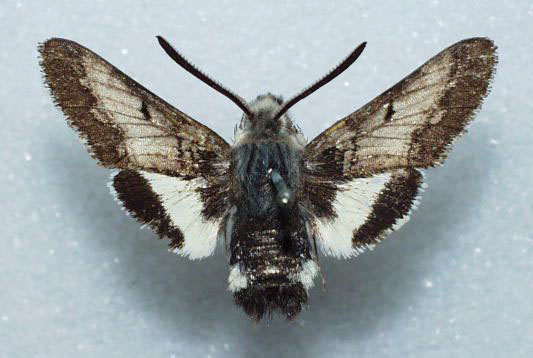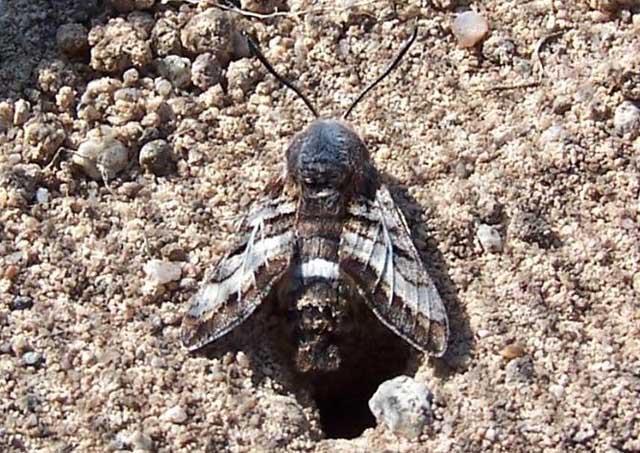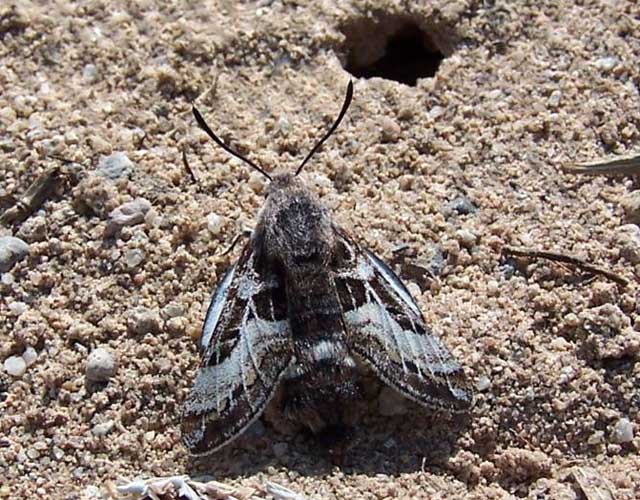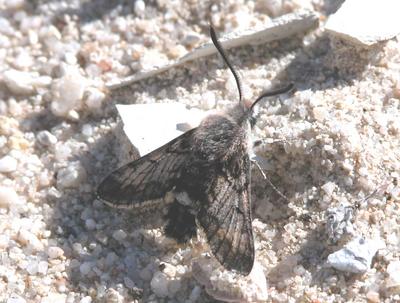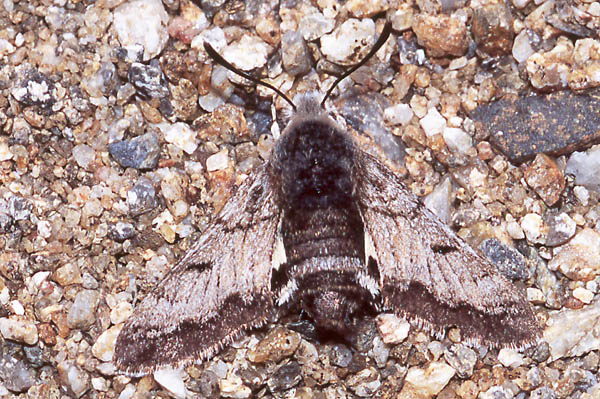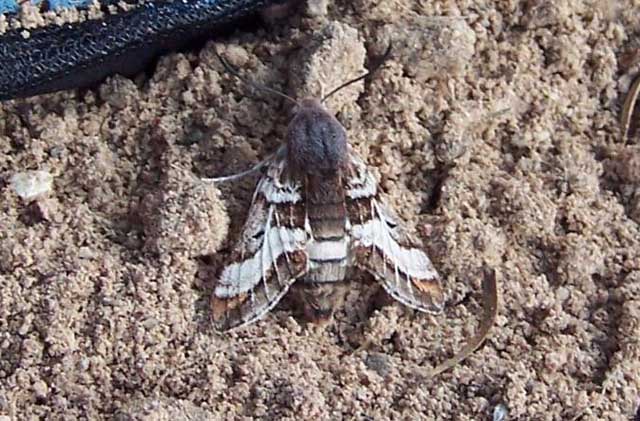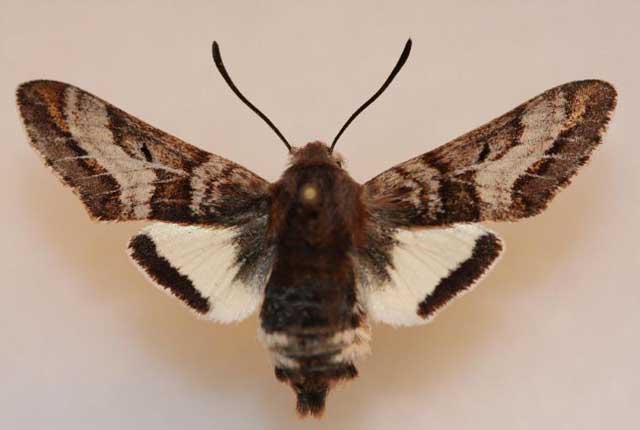EGGS, LARVAE AND PUPAE:Females deposit eggs singly or in
pairs on the underside of host leaves. Larvae feed on
various plants in the primrose family (Onagraceae).
Jennifer L. Bundy writes, 2009, "Ken Osborne assisted me with the pupation storage process by sharing info on a method he uses to successfully bury the pupae underground to
avoid desiccation or death by pathogens. The Yuma, AZ, E. phaeton habitat consists of silty sand and extreme temps beginning in the Summer and extending into
Fall.
Here in Yuma, the larva burrows underground and pupates, so I would need to mimic an environment parallel to the pupa's natural state during pupation.
"Utilizing Osborne's
method, I was able to dig a hole in the backyard and bury the pupae, leaving them underground in their usual silty sand environment until next season. My plan was to
dig up
the pupae in Mid-December, but with the heavy rains we received late November, I decided to dig them up early and check-up on pupal development. It was a good hunch,
because all were pre-eclosion.
"Concerned about desiccation and understanding the need for humidity to trigger eclosion, I buried the pupae again. This time the
set-up was in a large plant pot, using my backyard sand, and leaving the plant pot out in the sun. I placed a cage over the top to keep the moth from darting off.
I checked that pot every morning, spritzing with a little water each day, and would finally find my first adult above ground basking in the sun nine days later.
Rearing the larvae and getting the larvae to pupate was one accomplishment, but I don't think the pupae would have made it to eclosion without Ken Osborne's
storage method."
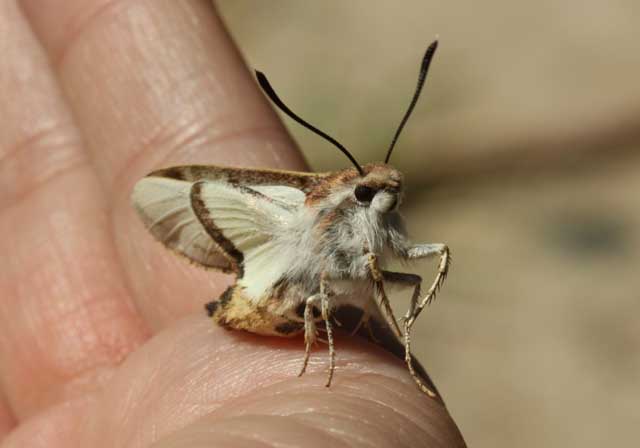
Euproserpinus phaeton still inflating or waiting for wings to "set",
Yuma, Arizona, March 12, 2011, courtesy of Jennifer L. Bundy.
On March 31, 2011, Jennifer L. Bundy sent me the following email in response to a question I asked about the depth at which she buries the pupae.
Jennifer wrote back: "I re-wrote and added soil depth (below). Note: this is not the depth they dig under natural conditions. I believe this
species digs rather deep underground, but I haven't been able to set up something to measure depth yet. I keep the pupae indoors through summer and fall.
They will burn-up at two feet underground, so I just keep them indoors and happy until late winter, when we get the rain.
"This is what I re-wrote:
"She is a female Euproserpinus phaeton I reared last spring from larva. I stored the pupa indoors for the remainder of spring, summer and winter in a small
rearing container. Once the [outside] temperature dipped in December, followed by a heat spike in January, I noticed wing maculation developing quickly. I placed
the pupa in my backyard flower pot (pupa placed in tiny chamber under 6" of damp sand) for three weeks during February. After seeing no activity, I decided to
dig her up just to check. I could see the white banding on her abdomen which is a good indicator of pre-eclosion. I placed the pupa in the fridge for a night,
to give it a good winter chill, then placed the pupa back on my desk, in the small rearing container, until I had time to bury it outdoors again. Few days later,
I heard a noise coming from my office desk, from one of my small rearing cups containing E. phaeton pupae. She was in the container, fully emerged from
pupa and running around in total darkness. I grabbed her up from the desk and took her outside. Soon as she caught the morning sunlight, she stopped scrambling
around and very quickly lifted her wings straight up while standing in the palm of my hand."
Visit Euproserpinus phaeton "mojave" larvae and pupae, Yuma, Arizona, courtesy of Jennifer L. Bundy.
Visit Euproserpinus phaeton "mojave" or nominate phaeton or euterpe larvae (all instars),
Los Angeles County, California,
courtesy of Jennifer L. Bundy.
Jennifer writes, "First weekend of April, I hit the road in search of Euproserpinus phaeton mojave (either adult, caterpillar, or ova). My trip would end as far
north as Los Angeles County. In one region of L.A. county, I sampled from 5 different localities (roadside, washes, hillside) and looking under every Oenothera
(Primrose) leaf I could for ova. The problem is that Euproserpinus and Hyles ova are almost identical and both moths post ova under the leaf. With each tiny green egg I
found, my only option was to take it home and wait to see what emerges.
"I brought the ova home and set them up in cups labeled with locality markers. Of the estimate 150 ova from L.A. County, 149 were Hyles and only one would turn out to be
Euproserpinus.
"Being that the ovum is from L.A. County, and based on prior research, the species would have to be mojave, or nominate, and not euterpe. However, this caterpillar is
rather colorful. Comparing my photos of this cat with Paul Johnson’s photos at Bill Oehlke’s site, it looks like euterpe. For those familiar with seeing phaeton and
euterpe caterpillars in the field, please have a look at my shots and tell me what you think. Regardless of what species, I was sad to see the conditions of the
habitat - there was trash piles everywhere and it's also a semi-motocross track."
I think Jennifer's images from Los Angeles County, California, are probably nominate phaeton, or just a normal variation in colour. They could also be
Euproserpinus euterpe, representing a slight extension of the published reports for this species.
Below are images of a larva and pupa courtesy of
Lynn and Gene Monroe, Granite Ridge Nature Institute, Lyons,
Colorado. This larva is from DiGiorgio Road,
Anza-Borrego Desert State Park,
San Diego County, California. The picture
was taken on March 5, 2003.
The larva is feeding on Oenothera deltoides and pupated on
March 6.
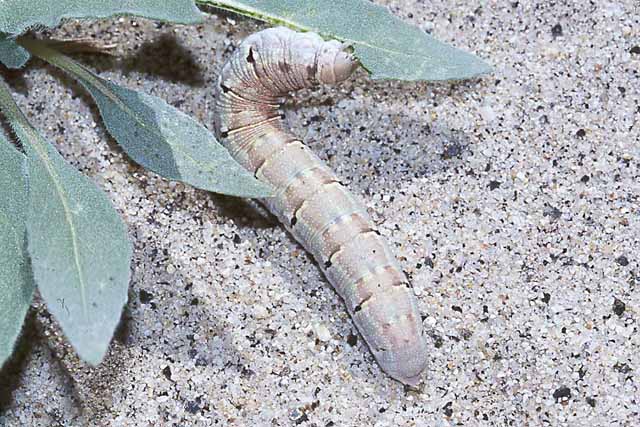
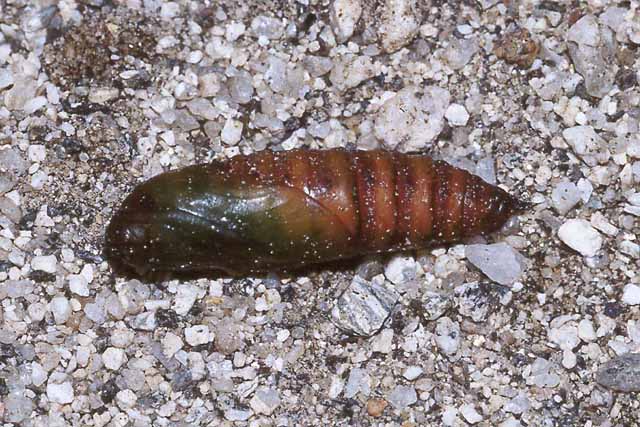
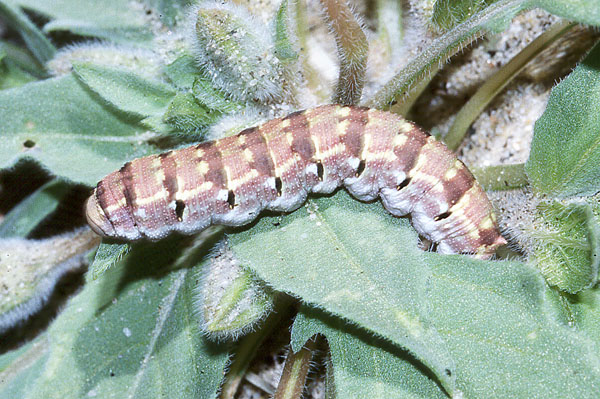
Euproserpinus phaeton eating Dune Evening Primrose. Note the small "horn."
Borrego Springs, CA , 5 March 2003,
courtesy of Lynn & Gene Monroe, Granite Ridge Nature Institute.
Use your browser "Back" button to return to the previous page.
Goto Main Sphingidae Index
Goto Macroglossini Tribe
Goto Central American Indices
Goto Carribean Islands
Goto South American Indices
Goto U.S.A. tables
Enjoy one of nature's wonderments: Live
Saturniidae (Giant Silkmoth) cocoons.
 | 
Show appreciation for this site by clicking on flashing butterfly to the left.
The link will take you to a page with links to many insect sites. |
|
